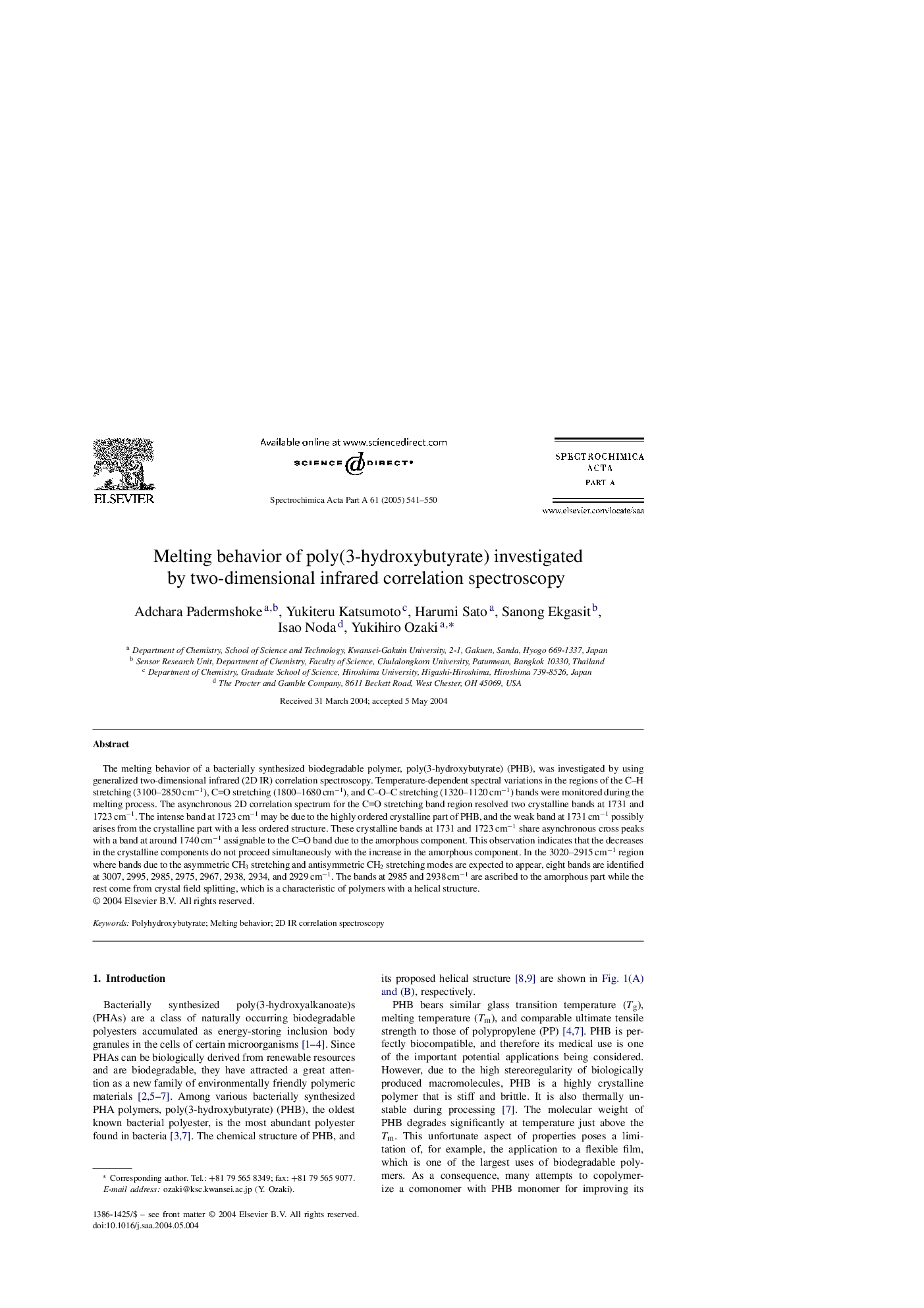| Article ID | Journal | Published Year | Pages | File Type |
|---|---|---|---|---|
| 10557490 | Spectrochimica Acta Part A: Molecular and Biomolecular Spectroscopy | 2005 | 10 Pages |
Abstract
The melting behavior of a bacterially synthesized biodegradable polymer, poly(3-hydroxybutyrate) (PHB), was investigated by using generalized two-dimensional infrared (2D IR) correlation spectroscopy. Temperature-dependent spectral variations in the regions of the Cî¸H stretching (3100-2850 cmâ1), Cî
O stretching (1800-1680 cmâ1), and Cî¸Oî¸C stretching (1320-1120 cmâ1) bands were monitored during the melting process. The asynchronous 2D correlation spectrum for the Cî
O stretching band region resolved two crystalline bands at 1731 and 1723Â cmâ1. The intense band at 1723Â cmâ1 may be due to the highly ordered crystalline part of PHB, and the weak band at 1731Â cmâ1 possibly arises from the crystalline part with a less ordered structure. These crystalline bands at 1731 and 1723Â cmâ1 share asynchronous cross peaks with a band at around 1740Â cmâ1 assignable to the Cî
O band due to the amorphous component. This observation indicates that the decreases in the crystalline components do not proceed simultaneously with the increase in the amorphous component. In the 3020-2915Â cmâ1 region where bands due to the asymmetric CH3 stretching and antisymmetric CH2 stretching modes are expected to appear, eight bands are identified at 3007, 2995, 2985, 2975, 2967, 2938, 2934, and 2929Â cmâ1. The bands at 2985 and 2938Â cmâ1 are ascribed to the amorphous part while the rest come from crystal field splitting, which is a characteristic of polymers with a helical structure.
Related Topics
Physical Sciences and Engineering
Chemistry
Analytical Chemistry
Authors
Adchara Padermshoke, Yukiteru Katsumoto, Harumi Sato, Sanong Ekgasit, Isao Noda, Yukihiro Ozaki,
